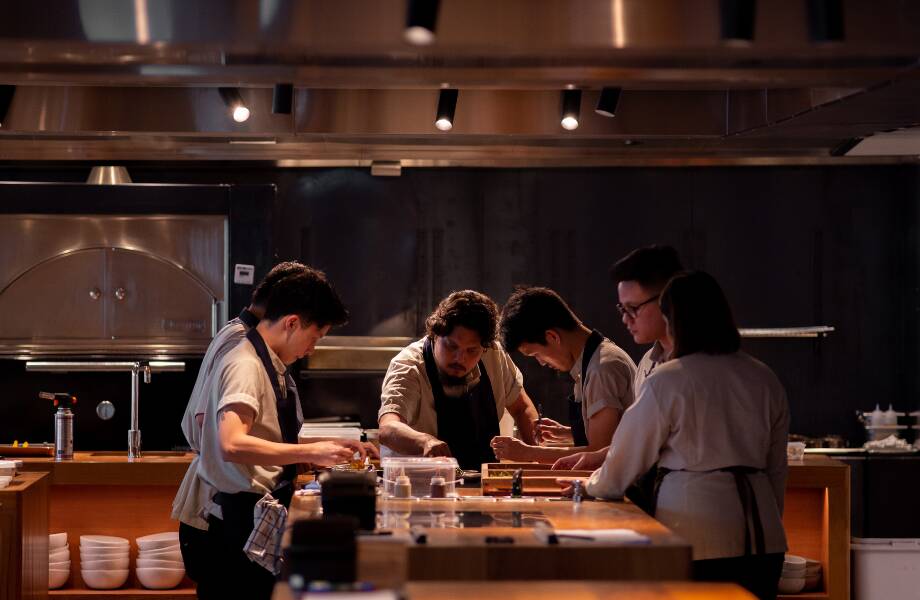There comes a time in many a tea drinker’s life when tea moves beyond being a pleasant, everyday ritual and becomes something more. These people are captured by the complexity of different teas, and are drawn to know more and understand tea on a deeper level. Taking this next step can be tricky, though. How do you take your tea studies to the next level? Here are some easy things you can do that will help you be able to appreciate tea on a deeper level.
1. Side-by-side tastings
The obvious way to learn more about tea is to drink more tea, but the process of learning about teas one by one is very time consuming. You can speed the process up by drinking two or more teas at a time.
When doing a side-by-side tasting, differences and similarities in the teas will be much clearer than when drinking a tea by itself. A tea’s bitterness will be more pronounced if you drink it alongside a tea that is not bitter at all, for example. Drinking teas side by side will greatly help you understand each variety’s flavor.
By using this method, you can explore many different aspects of tea, and learn how subtle differences in tea-making affect flavor. Want to know why autumn tieguanyin is so highly sought after? Trying drinking it next to a spring tieguanyin from the same region. Only then will you begin to understand the heightened aroma given off by the drier autumn air.

By drinking teas side by side, you can examine differences in pick time, cultivars, processing method, and price points, to name just a few factors. The important thing about side-by-side tasting is to pick a specific focus for each tasting.
2. Focus on a topic or one variety of tea
That brings us to the next point. One winter, all I drank was Wuyi oolongs. Luckily I was working at Tea Drunk — New York’s premiere tea house — at the time, and so there was no short supply. Three times a day, every day, I would drink a “cliff tea,” as Wuyi oolong is often translated to English.
When I went in, all cliff teas sort of tasted the same to me. Heavy roasted, rough texture and with an aroma that reminded me of hot asphalt in the summertime. By the end of my study, I’d formed my own personal opinion on each tea, and was able to fully defend it in a tea debate — a skill that any serious drinker will need to use every now and again.
Picking one tea to focus on will immerse you in that tea. You will learn the ins and outs of that tea, experiencing the good, the bad, and the downright funky. You will gain an understanding of the tea at all levels, which will greatly help you judge quality in the future — another must-have skill for serious tea drinkers. Which brings me to my next point:
3. Buy expensive tea
The biggest problem with the Western tea scene is a reluctance to spend money on tea. I’ve seen a slight change in this over the last few years, but it seems that for the most part, people don’t see the value in expensive teas.
While it is understandable to hesitate to spend a large amount of money on something that will soon be gone, if you want to really increase your understanding of tea, you must bite that bullet every now and then. To truly understand tea, you must drink the unusually high grade. Drink the teas in which the tea maker brought out the leaves’ best characteristics, teas that lack any major flaws. Drinking teas like this will really show you what tea can be, and will give you a whole new appreciation for the drink.
These teas, though, will cost a pretty penny. The two biggest factors for a tea’s price are the location and the amount of focus put into the tea. Teas that exemplify the unique characteristics of their category and boast few or no flaws require a lot of time and energy to make, and therefore are not cheap. If you want to drink the really good teas, be prepared to spend the money.

Learning tea is like putting data points on a graph. In the beginning, you have few data points, and the ones you do have seem to have little or no connection.
As time goes on, and you add more data, you begin to recognize patterns, and a grouping begins to form. The more thorough your grouping of data points, the easier it becomes to recognize an outlier when you taste it, whether it be good or bad. The trick, as you begin to form you graph, is to know where your data is lacking, and tailor your drinking to fill those mental holes. This is when you truly begin to study tea.















